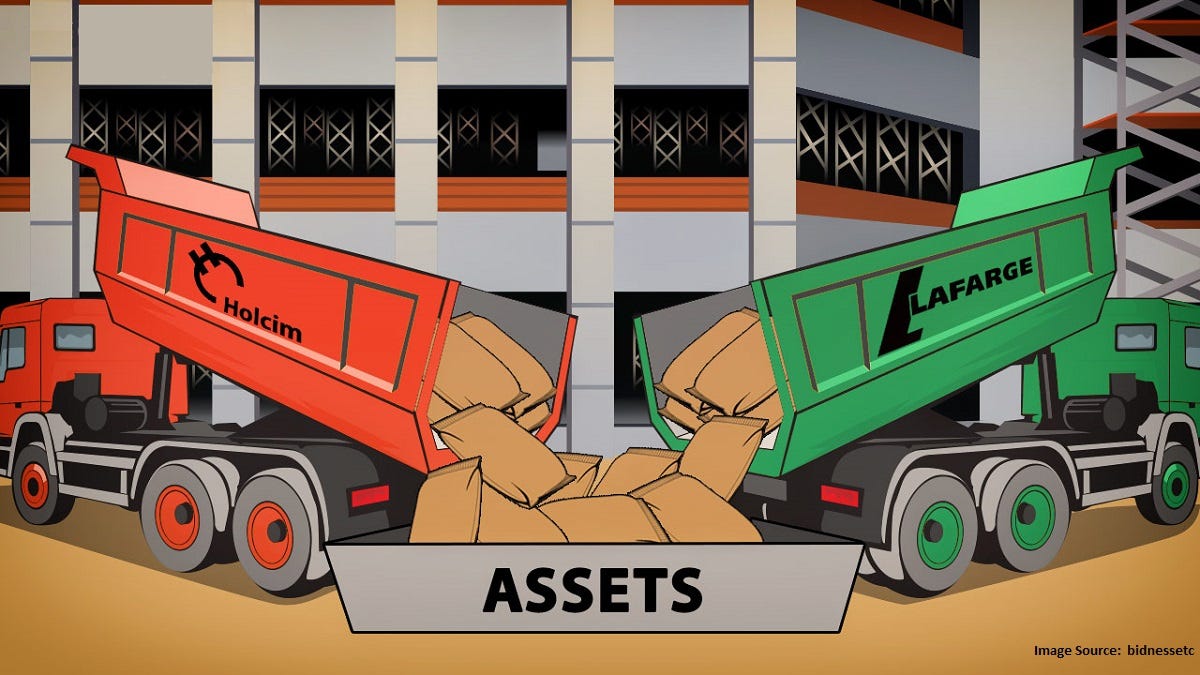Ambuja Cements: A 1990s Strategic Move and Its 20+ Year Impact
On 16, September 2022, Newspapers all over India had headlines, “Adani Group acquires Ambuja and ACC to become India’s second-largest cement maker. Gautam Adani-led group said that it paid $6.4 billion (over 51,000 crores) in cash to acquire Switzerland-based Holcim's 63.1% stake in Ambuja Cements and 54.5% holding in ACC Limited.”
But what was not touched upon or discussed was a small but very vital aspect of the journey of “How did the Ambuja reach this stage?”
The Origin of Ambuja Cements!
Ambuja Cements was founded in 1983 by Narotam Sekhsaria and Suresh Neotia, two traders with very little knowledge of cement or manufacturing. What made up for this lack, was their farsightedness. The company was known as Gujarat Ambuja Cements Ltd, in the earlier days. Here are the areas where Ambuja pioneered in the Cement Industry:
Environment Sustainability: Cement production leads to a large amount of pollutants like dust or particulate matter, NOx, SOx, carbon oxides, and methane, among others. To beat that, it had developed a thriving Rose Garden right next to its plant in Gujarat as a showpiece of the company's achievement of a dust-free environment around the factory.
I CAN: This was the spirit that demonstrated the ability to be able to achieve seemingly impossible tasks, by empowering people. GIVE a man ORDERS, and he will do the task REASONABLY WELL, But let him get his own targets, GIVE him freedom and authority and his task becomes a personal mission. The company’s Annual reports right from the initial years have various details that demonstrate this Spirit of the company.
Unique Transportation Idea: A captive port with four terminals for timely, cost-effective, cleaner shipments of bulk cement to its customers. When the cost of transporting cement by road seemed expensive, it became the first Indian company to use the sea to transport cement in bulk. In 1993, a whole system was set up to conquer the lucrative cement market in Mumbai. An all-weather port was built at Muldwarka, Gujarat, just 8km from the company’s Ambujanagar plant, which became a benchmark for the industry.
There are many more such achievements/stories of the company. But in this issue, we take you back to 1999.
Chapter 1: 1999
In the late 1990s, in many sectors of India, Foreign companies were entering India, either by acquiring stakes in existing companies and/or setting up greenfield companies. Cement was a sector that was not immune to the same. Lafarge (It was a French Cement giant in those days) was seeking to enter India. India’s largest cement company by capacity was ACC ( Known as Associated Cement Companies in those days). It did not have a “promoter” in the real sense. Its largest shareholder was Tata Group with a 14% stake, with many domestic institutions and public the rest. Tatas did not run ACC (that is a story for one of the subsequent issues).
In order to prevent or stymie easy entry of foreign companies in the Cement Industry, Gujarat Ambuja acquired the 13.8% stake in ACC from the Tatas at Rs. 370 per share as part of its strategy to keep Lafarge, the world’s largest cement maker, away from the Indian market. This purchase was in two tranches and by paying three times the then prevailing market price of ACC shares between December 1999, and June 2000. Yes, too good to be true!
The question was, why, for instance, should Gujarat Ambuja cough up such a huge premium for a minority stake? Especially when it did not increase its stake to 15% which was then the threshold for triggering an open offer in those days.
However, Lafarge entered the Indian market anyway in 2000 and became a significant player in Eastern India following the acquisition of plants from Tata Steel (Yes, Tata Steel owned a 1 million tonne cement plant, which used the waste slag from its steel plant as raw material for manufacturing cement) and Raymond, to start its journey in India.
Chapter 2 – 1999 to 2004
Gujarat Ambuja did not increase the stake beyond 15% as that would have triggered the open offer. Gujarat Ambuja, knowing fully well the financial implications of the 13.8% which they had bought, did not hold the ACC stake in itself, but created a subsidiary Ambuja Cement Holdings Ltd (subsequently renamed to ACIL) and more importantly sold a significant stake to Private Equity (to reduce the financial burden on Gujarat Ambuja). The arrangement with the Private Equity was that they would exit in 2005.
As per Business Standard article 24th January 2005, reprinted in Rediff.com,
“Gujarat Ambuja did not have the financial wherewithal to take full control of ACC. The total cost of buying out the private equity partners and making the mandatory open offer would have cost GACL approximately Rs 2,050 crore (Rs 20.5 billion), based on the current open-offer price of Rs 370 per share of ACC. This is nearly seven times the company's free cash flow for FY04.”
So, clearly, the strategy to prevent foreign companies from getting a toehold in India was likely to severely impact the “financial health” of otherwise extremely profitable Gujarat Ambuja’s stand-alone operations. The private equity that had invested Rs. 372 crore in ACIL was to exit in 2005 (with obviously significant profits) .
"Gaining full control of ACIL by buying the Private Equity investors would have put the company (GACL) through substantial financial burden which has its own implications for Ambuja shareholders,"
“Next, GACL could not have continued waiting in the wings forever. With the cement industry looking at bumper years ahead, ACC would surely have come under threat of a hostile takeover bid from one of the foreign players.”
Chapter 3 - 2005
In January 2005, ”GACL made another unexpected move - in part to reverse its earlier decision. It agreed to allow Holcim of Switzerland to take majority control in the investment company -- Ambuja Cements India Ltd -- which held GACL's stake in ACC. Under the deal signed last week, Holcim said it is buying out a 40% stake in ACIL from two private equity investors. Once Holcim buys out the private equity investors, it will subscribe to a fresh issue of equity and preferential shares by ACIL, and this money will be used to make an open offer for additional shares in ACC to raise its stake to above 50%.”
Yes, in a reversal of its 1999 strategy (It had acquired 13.8% of ACC at 3 times the market price then to prevent foreign entry into the Cement Industry), Gujarat Ambuja Cement sold its stake in ACC to a foreign player Holcim in 2005, primarily to get out of a sticky financial situation and over next 12 months, both ACC and Gujarat Ambuja Cements became part of Holcim group. Gujarat Ambuja Cements was renamed as Ambuja Cements Ltd.
And, India had some of the world’s largest cement companies controlling a significant share of the total Industry capacity.
Did the shareholders of ACC and/or Gujarat Ambuja Cements benefit at that time due to the move in 1999, there are plenty of opinions on the same and we do not wish to comment as that was not the purpose of the article.
Chapter 4 – Small Asides
Mr. Narotam Sekhsaria by being on the Board of ACC post-1999 Tata stake purchase, has gone on record in his Book, on the productivity gains at ACC in the period 1999 to 2005 as a result of his involvement. (Gujarat Ambuja Management was not involved in day-to-day management at ACC)
Subsequently, in 2015, Holcim and Lafarge merged to form the largest building material company in the world. In India, the company joint entity was the largest with a capacity similar to Ultratech. However, the Competition Commission, has asked the merged entity to divest 5 MT of its capacity to get approvals for their merger and this capacity of Lafarge was bought by Nirma in 2016 in a 1.4 billion deal, making Nirma a significant player in the Cement Industry.
As an acknowledgement of his capabilities, Mr. Narotam Sekhsaria, Holcim continued to on the Boards of both ACC and Gujarat Ambuja Cements as Chairman from 2005 to 2022.
In 2022, Holcim exited India completely selling its stake in ACC and Ambuja Cements to Adani Group. Holcim's exit from India was primarily in line with its stated strategy to focus on low-carbon building materials and had earlier exited from some other countries before India.
So, this was a small but important perspective on the journey of Gujarat Ambuja Cements in one of the most important sets of events that might have almost single-handedly shaped the current status of the company of being owned by Adani Group.
In hindsight, a question that can be asked is, Is it likely that Gujarat Ambuja Cements would have continued to be an independent cement company even in 2023, but for the move to acquire ACC equity from Tatas? Remember, Gujarat Ambuja was a highly profitable company and had many strengths as a standalone company, and was clearly the best-performing cement company in India. There was though another aspect of Mr. Sekhsaria being diagnosed with cancer and that also being one of the “possible” triggers to sell Gujarat Ambuja Cements to Holcim.









